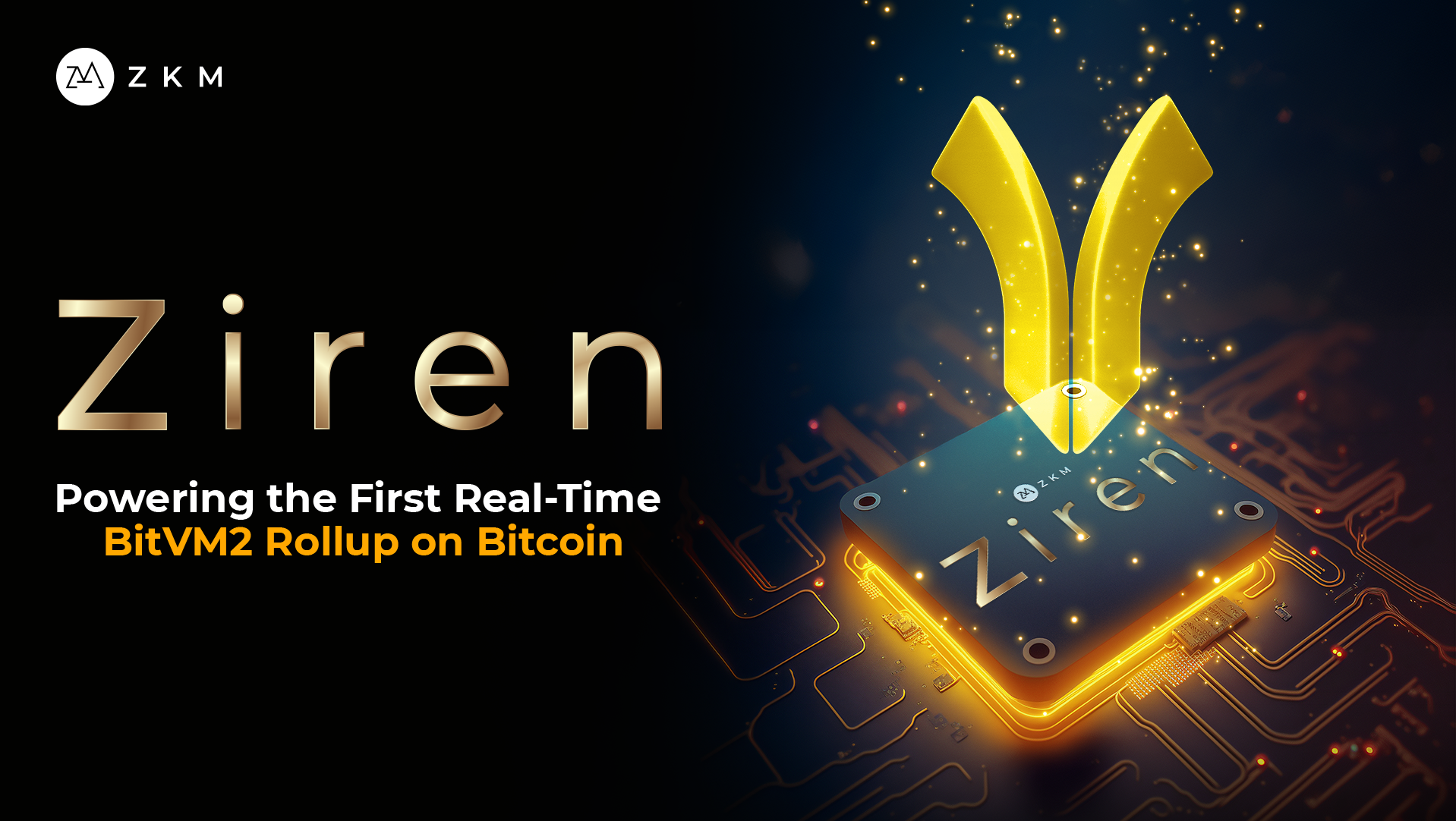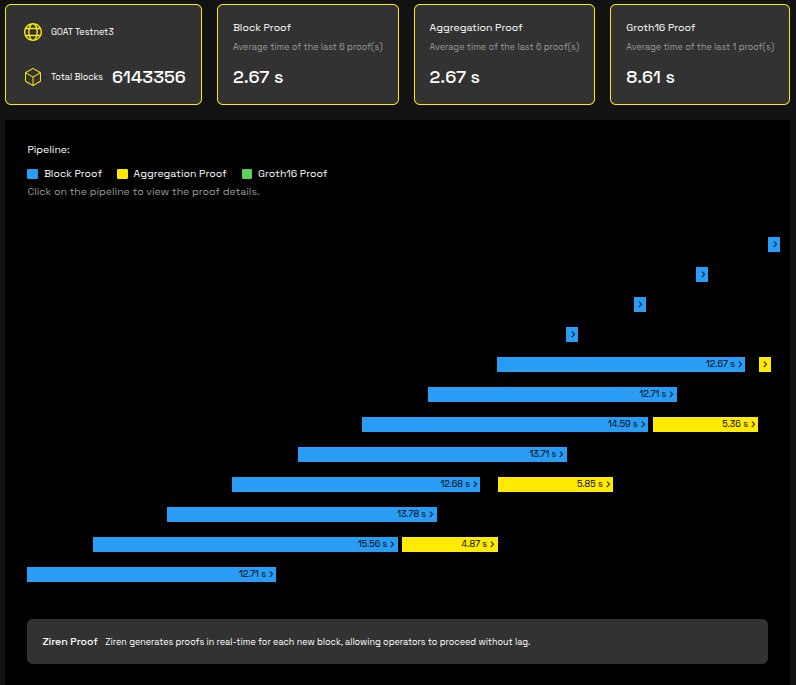
GOAT Network just launched the first public beta testnet of its BitVM2 zkBridge, enabling peg-outs from Bitcoin with real-time proof verification. It’s an important milestone for Bitcoin Rollups - and one that quietly depended on Ziren.
Ziren, ZKM’s production-grade zkVM and proof system, powers the entire proving pipeline behind GOAT’s bridge. From block execution to final Groth16 compression, Ziren ensures that each step completes fast enough to keep up with GOAT’s 3.4s block time - without falling behind.
GOAT Network operates on a decentralized sequencer with fast block times and synchronous peg-out logic. That means withdrawal proofs aren’t optional - they’re required now, or capital gets stuck. If a single proof lags, the delay compounds block by block, and withdrawals grind to a halt.
Most proving systems today aren’t built to handle that. Ziren is.
Across GOAT’s beta:

All pipelined. All running on Ziren’s distributed GPU-backed prover architecture.
Ziren’s architecture treats latency as a first-class constraint. Each new block is proven independently using a dedicated prover instance - often tied to a single GPU or machine. Once two (or more) block proofs complete, Ziren aggregates them into a single STARK proof and wraps it in Groth16 for compatibility with BitVM2 validation.
This design - parallel block proving, chained state transitions, and pipelined SNARK wrapping - lets the system keep pace with block production without bottlenecks. Every proof is verifiable. Every peg-out is live.
Bitcoin is becoming programmable. But without performant, real-time proof infrastructure, Rollups simply don’t work. That’s why GOAT Network’s beta matters - and why Ziren matters even more.
By powering real-time proving in a live Bitcoin L2 system, Ziren demonstrates what a production zkVM must deliver:
And the best part? This isn’t a future roadmap. It’s running today.
Ziren is the embodiment of production-grade ZK. GOAT Network is just the beginning.
Learn more at zkm.io
GOAT Network just launched the first public beta testnet of its BitVM2 zkBridge, enabling peg-outs from Bitcoin with real-time proof verification. It’s an important milestone for Bitcoin Rollups - and one that quietly depended on Ziren.
Ziren, ZKM’s production-grade zkVM and proof system, powers the entire proving pipeline behind GOAT’s bridge. From block execution to final Groth16 compression, Ziren ensures that each step completes fast enough to keep up with GOAT’s 3.4s block time - without falling behind.
GOAT Network operates on a decentralized sequencer with fast block times and synchronous peg-out logic. That means withdrawal proofs aren’t optional - they’re required now, or capital gets stuck. If a single proof lags, the delay compounds block by block, and withdrawals grind to a halt.
Most proving systems today aren’t built to handle that. Ziren is.
Across GOAT’s beta:

All pipelined. All running on Ziren’s distributed GPU-backed prover architecture.
Ziren’s architecture treats latency as a first-class constraint. Each new block is proven independently using a dedicated prover instance - often tied to a single GPU or machine. Once two (or more) block proofs complete, Ziren aggregates them into a single STARK proof and wraps it in Groth16 for compatibility with BitVM2 validation.
This design - parallel block proving, chained state transitions, and pipelined SNARK wrapping - lets the system keep pace with block production without bottlenecks. Every proof is verifiable. Every peg-out is live.
Bitcoin is becoming programmable. But without performant, real-time proof infrastructure, Rollups simply don’t work. That’s why GOAT Network’s beta matters - and why Ziren matters even more.
By powering real-time proving in a live Bitcoin L2 system, Ziren demonstrates what a production zkVM must deliver:
And the best part? This isn’t a future roadmap. It’s running today.
Ziren is the embodiment of production-grade ZK. GOAT Network is just the beginning.
Learn more at zkm.io